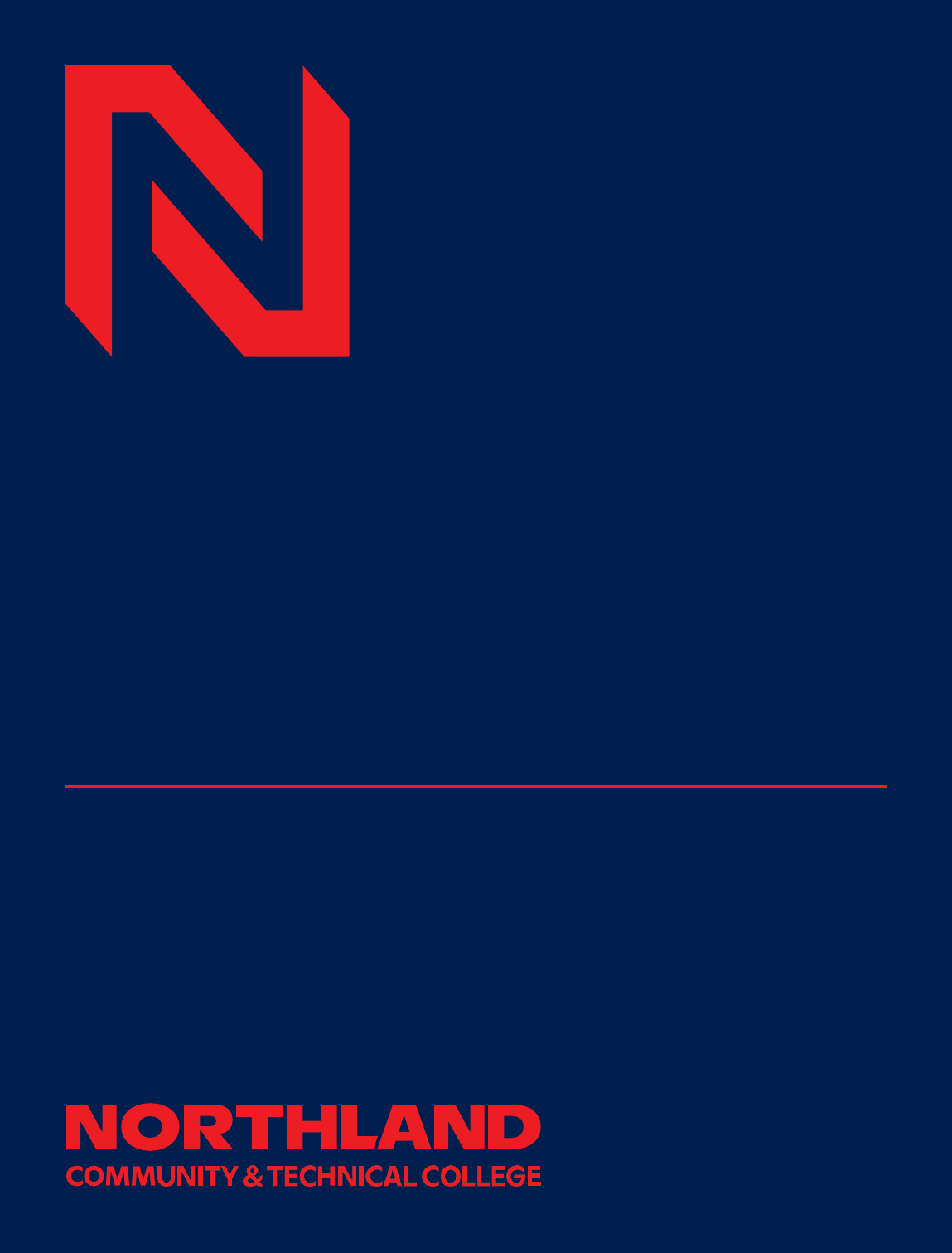
COLLEGE IN THE
HIGH SCHOOL
Student Handbook
Academic Year 2022-2023
TABLE OF CONTENTS
WHAT IS COLLEGE IN THE HIGH SCHOOL (CHS)? ........................ 1
WHAT DOES IT MEAN TO TAKE A CHS COURSE? ...................... 1-2
WHAT SHOULD YOU KNOW ABOUT CHS COURSES ..................... 2
WHY SHOULD I ENROLL IN A CHS COURSE? ............................. 2-3
WHO CAN ENROLL IN A CHS COURSE? ......................................... 3
HOW CAN I BECOME A CHS STUDENT? ...................................... 3-5
PROCESS OF ADVISING AND REGISTERING .............................. 5-6
DROPPING AND/OR ADDING A COURSE OR WITHDRAWING ..... 6-7
SATISFACTORY ACADEMIC PROGRESS ..................................... 7-8
CODE OF CONDUCT ........................................................................ 8
HOW MUCH WILL A CHS COURSE COST ........................................ 8
TRANSFER OF CHS CREDITS .......................................................... 8
COLLEGE TRANSCRIPT .................................................................. 9
HOW TO ACTIVATE YOUR STAR ID ................................................ 9
LIBRARY SERVICES ................................................................... 9-10
TUTORING SERVICES .................................................................... 10
FERPA/ADA .................................................................................... 11
NACEP ............................................................................................ 11
SIGNATURE PAGE - RECEIPT OF STUDENT HANDBOOK ............ 12

P a g e | 1
WHAT IS COLLEGE IN THE HIGH
SCHOOL?
College in the High School offers challenging, engaging courses to eligible high school
students throughout Northwest Minnesota. College in the High School courses are the
same courses that are taught on-campus at Northland.
Through College in the High School (CHS), qualified students like you, can earn college
credit prior to high school graduation. It gives you a head start on your college career
before you even leave high school. CHS differs from other pre-college credit programs in
that your own high school instructors teach you the college courses during your normal
school day, at your own high school. You don't need to come to the Northland campuses to
take the class.
WHAT DOES IT MEAN TO TAKE A CHS
COURSE?
You will be expected to perform work at a college level. The pace of a course is
typically different than that of a high school course.
1. How can you prepare to be successful in a college level course?
a. Learn how to study for tests. As a College in the High School student
you should get into the habit of studying at least one hour every night
even if you do not have homework.
i. Re-read a chapter
ii. Review notes taken in class
iii. Read a book
iv. Practice writing a research paper or an essay
2. Research:
a. You will need to:
i. Be able to write 6-9-page papers
ii. Know how to research
iii. Know how to document sources
iv. Know how to use correct grammar
v. Know how to write a thesis statement
3. Reading Skills:
a. You will need to:
i. Read all the time
ii. Read everything from novels to text books
iii. Know the reading load is much higher in college compared to
high school

P a g e | 2
4. Note Taking:
a. Develop a format that you understand best
b. Learn the value of an outline
c. Consider a tape recorder to listen to a lecture more than once
5. Time Management:
a. You need to be self-motivated when taking a college-level course
b. Your instructor for your college-level course may not remind you of
tests or assignment deadlines after they hand out their course
syllabus with those dates listed (typically the syllabus is handed out
the first day of class)
c. Keep a planner and use it
WHAT YOU SHOULD KNOW ABOUT
CHS COURSES
1. These courses are official Northland Community and Technical College courses,
taught using Northland’s quality standards
2. Instructors approved to teach these courses have submitted the appropriate
documentation to be an instructor at Northland Community and Technical College.
The college has reviewed and approved their credentials and determined that they
are authorized to teach for Northland.
3. Academic work in these courses are at the college level. Students should
anticipate a rigorous set of standards and more substantial time commitment for
work outside of class.
4. These courses create an official Northland Community and Technical College
transcript.
5. Since these courses create a transcript, this credit may be used toward a degree at
Northland or transferred to most public and private colleges around the country,
though every college and university has its own policies governing transfer credit.
We recommend each student check with colleges to inquire about transfer credit
policies.
6. Your decision to enroll in challenging college courses and to begin your college
transcript is a big step. The following pages have been assembled to provide you
and your family with important information, now that you are a college student,
through Northland’s College in the High School Program. Please read this
handbook carefully, and feel free to contact your high school counselor, your
Northland advisor, or our office if you have any questions.
WHY SHOULD I ENROLL IN A CHS
COURSE?
1. You can earn college credits and high school credits at the same time
2. It will expose you to college-level course work, college-level academic rigor, and
college-level challenges
3. It will enhance the amount, level, and diversity of learning in high school – you will
be pushed beyond the traditional high school curriculum

P a g e | 3
4. It will reduce the time required to complete a degree
5. It will promote your self-confidence, a trait that will serve you well as you move
forward from high school
6. It will lower the cost of college for you and your family
WHO CAN ENROLL IN A CHS COURSE?
1. Liberal Arts & General Education Courses
a. High school juniors or seniors
b. Have appropriate high school GPA
i. High School GPA of 2.6 for college level English
ii. High School GPA of 2.8 plus Algebra 2 grade of C- or higher for
college level math
c. Take the Accuplacer assessment or have appropriate ACT, MCA, or SAT
scores in math and reading or English
d. Combination of approved Accuplacer assessment, ACT, MCA, or SAT
scores with required high school GPA (Minnesota State System Multiple
Measures Standards – Procedure 3340P)
2. Technical Courses
a. High school sophomores, juniors or seniors with a 2.5 GPA
i. Sophomores with a 2.5 GPA may be eligible to take one technical
course per term
b. Students are required to demonstrate that they have the ability to
successfully complete college-level coursework at a “C” level or higher
c. Have appropriate high school GPA
i. High School GPA of 2.6 for college level English
ii. High School GPA of 2.8 plus Algebra 2 grade of C- or higher for
college level math
d. Take the Accuplacer assessment or have appropriate ACT, MCA, or SAT
scores in math and reading or English
e. Combination of approved Accuplacer assessment, ACT, MCA, or SAT
scores with required high school GPA (System Multiple Measures
Standards – Procedure 3340P)
HOW CAN I BECOME A CHS STUDENT?
1. Be admitted as a Northland student (Fulfill enrollment requirements)
a. Complete the application for admission -
http://www.northlandcollege.edu/admissions/application/new-student-
application/
b. Submit official high school transcript
c. GPA Requirement –
i. Liberal Arts courses have a required GPA of 3.0 or a 2.75 GPA and
can register for one liberal arts course the first semester and if
successful with a C or higher grade, can register for additional
courses their second semester.
i. Career and Technical Education courses have a required GPA of
2.5.
2. Meet the appropriate course placement requirements

P a g e | 4
a. Have appropriate high school GPA
i. High School GPA of 2.6 for college level English
ii. High School GPA of 2.8 plus Algebra 2 grade of C- or higher for
college level math
b. Take the Accuplacer assessment or have appropriate ACT, MCA, or SAT
scores in math and reading or English or combination of approved
Accuplacer assessment, ACT, MCA, or SAT scores with required high
school GPA (System Multiple Measures Standards – Procedure 3340P)
i. Accuplacer Score Requirements
1. For a college level math course other than Calculus I,
students must achieve an 85 or higher in the elementary
algebra portion of the Classic Accuplacer or a 60 or higher in
the intermediate algebra portion of the Classic Accuplacer or
250 or higher in the Advanced Algebra and Functions (AAF)
portion of the Next Generation Accuplacer
2. For a college level English course, students must achieve a
78 or higher in the reading portion of the Classic Accuplacer
or a 250 or higher in the reading portion of the Next
Generation Accuplacer
c. ACT Score Requirements
i. For a college level math course, students must achieve a 22 or
higher in the math portion of the ACT
ii. For a college level English course, students must achieve a 21 or
higher in the reading portion or an 18 or higher in the English portion
of the ACT
d. MCA Score Requirements
i. For a college algebra course, students must achieve an 1158 or
higher in the math portion of the MCA, for a college level statistics
course, students must achieve an 1148 or higher in the math portion
of the MCA
ii. For a college level English course, students must achieve a 1047 or
higher in the reading portion of the MCA
e. SAT Score Requirements
i. For a college level math course, students must achieve a 530 or
higher in the math portion of the SAT
ii. For a college level English course, students must achieve a an ERW
480 or higher in the reading or English portion of the SAT
3. Multiple Measures for Course Placement Options – Minnesota State System Policy
a. College level reading placement with any of the following
i. HS GPA of 2.5 or higher and MCA Reading 1042-1046, SAT
Reading 440-479, ACT Reading 19-20, Accuplacer NG Reading
236-249
b. College level English placement with any of the following
i. HS GPA of 2.5 or higher and SAT Writing 440-479, ACT English
16-17, Accuplacer NG Reading 236-249
c. College level Algebra placement with any of the following
i. HS GPA of 2.7 or higher and MCA Math 1152-1157, SAT Math
520-529, ACT Math 20-21, Accuplacer NG Math 236-249
d. College level Statistics or Liberal Arts math placement with any of the
following
i. HS GPA of 2.7 or higher and MCA Statistics 1146-1147, MCA
Liberal Arts Math 1146-1149

P a g e | 5
Process of Advising & Registering
1. The format used to advise and register students is to deliver the information in
person at each high school. The timeline varies based on the school’s
availability. Time spent at each school is based on the number of students who
need to be advised and registered. Advising is a joint effort between the high
school counselor/contact and the college advisor.
2. Information provided during the advising and registration session includes, but is
not limited to, course content questions, suitability of requested courses for the
student's overall goals and the transfer of credit process. The benefits and
responsibilities of taking CHS courses, specifically, the advising and registration
session cautions students about the importance of understanding that the CHS
course grades become part of the student's permanent record and poor
performance could have implications for the student's future college plans.
3. Take the Accuplacer assessment or have appropriate ACT, MCA, or SAT scores
in math and reading or English combination of approved Accuplacer assessment,
ACT, MCA, or SAT scores with required high school GPA (System Multiple
Measures Standards – Procedure 3340P)
4. Complete a registration form
a. Check appropriate courses that you wish to register for if you meet the
pre-requisites
b. Sign and date the form
5. The normal semester credit load for a fulltime college student is 15-18 credits,
although full-time is considered 12 credits. The maximum number of credits that
a student can take in any one semester is 22. A student may petition to take
more than this if they meet the criteria related to academic progress. Policy 3270
Maximum Credit Load.
6. CHS course cancellation could occur if there is low enrollment in the CHS course
or the CHS instructor has left the school. If there is a CHS course cancellation
the notification is sent from the CHS school to the Northland CHS Coordinator.
The Northland CHS Coordination notifies the Student Services staff and the
Student Services staff processes the drops from the course.
7. There are courses at Northland that are offered as College in the High School
courses that have pre-requisites that a student must meet to register for
Northland credit:
Course
Enrollment Pre-requisites
BIOL 2256 Advanced Physiology
BIOL 2254 Anatomy & Physiology II or
instructor permission
ENGL 1111 Composition I
Appropriate score on Accuplacer Assessment,
MCA Reading Assessment, or ACT Reading or
English or meet Multiple Measures Standards
ENGL 1112 Composition II
Completion of ENGL 1111 Composition I
Math 1106 Trigonometry
Appropriate score on Accuplacer Assessment,
MCA Math Assessment, or ACT Math, or MATH
0094 or MATH 0098 or meet Multiple Measures
Standards

P a g e | 6
MATH 1110 College Algebra
Appropriate score on Accuplacer Assessment,
MCA Math Assessment, or ACT Math, or MATH
0094 or MATH 0098 or meet Multiple Measures
Standards
MATH 1113 Pre-Calculus
Appropriate score on Accuplacer Assessment,
MCA Math Assessment, or ACT Math, or MATH
0094 or MATH 0098 or meet Multiple Measures
Standards
MATH 2203 Statistics
Appropriate score on Accuplacer Assessment,
MCA Math Assessment, or ACT Math, or MATH
0094 or MATH 0098 or MATH 1102 or meet
Multiple Measures Standards
MATH 2231 Calculus I
MATH 1106 and MATH 1110 or MATH 1113
8. Grading Standards:
http://www.northlandcollege.edu/about/policies/_docs/3090.pdf
DROPPING AND/OR ADDING A COURSE
OR WITHDRAWING FROM A COURSE
1. What is the difference between dropping and withdrawing?
a. Drop means you can drop the class within a free grace period. A dropped
class will not appear on your transcript.
b. Withdraw means you can receive a “W” grade for the class (after the
drop/add date). If you are receiving an “F” in a course, it may be to your
advantage to withdraw from the course. The “W” does not count against the
GPA calculation. The last day to withdraw from a full semester course is at
the 80% mark of the term.
2. The last day to add or drop a College in the High School course for fall term is the
first Monday after October 1.
3. The last day to add or drop a College in the High School course for spring term is
the first Monday after March 1.
4. The last day to withdraw from a College in the High School course for fall term is
the first Monday after December 10.
5. The last day to withdraw from a College in the High School course for spring term is
the first Monday after May 10.
6. If you fail to add a course by the dates above, you will need to go through the
appeals process at Northland – request for a late add of a specific course
a. If your appeal is approved by the Academic Appeals Committee, you will
need to fill out the registration form or the Drop/Add form
b. If your appeal is denied, you will not receive college credit for the course
7. If you fail to drop a course by the dates above, you will need to go through the
appeals process at Northland – request for a late drop
a. If your appeal is approved, the course will be dropped from your schedule
and it will not show up on your transcript
b. If your appeal is denied, the course will remain on your schedule and your
transcript. The grade you receive will be calculated into your GPA.
c. If your appeal is denied and you are within the withdrawal period, you can
withdraw from the course.

P a g e | 7
i. The course will remain on your transcript and the grade will post as
a “W”
ii. A withdraw (“W”) will not calculate into your GPA however, it will
calculate in the percentage of courses you have completed
8. If you fail to withdraw from a course by the dates above, you will need to go through
the appeals process at Northland – request for a late withdraw
a. If your appeal is approved, your grade for the course will show as a “W” on
your transcript
b. If your appeal is denied, the course will remain on your schedule and your
transcript. The grade you receive will be calculated into your GPA
SATISFACTORY ACADEMIC PROGRESS
1. The SAP policy has two requirements that students must meet:
a. Students must earn an appropriate cumulative GPA. For most students this
is a 2.00 cumulative GPA or higher.
i. Students who have attempted 5 or less credits may have a 0.00
cumulative GPA
ii. Students who have attempted 6 to 23 credits must have a 1.75
cumulative GPA
iii. Students who have attempted 24 or more credits must have a 2.00
cumulative GPA
b. Students must earn an appropriate percent of completion. For most
students this is a 67% cumulative percent completed.
i. Students who have attempted 5 or less credits may have a 0%
completion rate.
ii. Students who have attempted 6 or more credits must have a 67%
cumulative completion rate.
2. Warning Status
a. The first time your GPA falls below 2.0 and/or your cumulative completion
rate falls below 67%
b. You can still register for the next semester
c. You need to raise your cumulative GPA to at least a 2.0 or higher and you
need to raise your cumulative completion rate to 67%
3. Suspension Status
a. If you are on warning and do not improve to a cumulative 2.0 GPA and/or
you fall below a cumulative 67% completion rate, you will be suspended
b. The earliest you could enroll at Northland would be one full academic year
after the suspension
c. Suspension status does not only impact your eligibility to enroll at Northland
Community and Technical College, it could also impact your eligibility to
enroll at other colleges or universities while the suspension is active.
4. Appeals: You may appeal suspension if you have extenuating circumstances.
Extenuating circumstances may include but are not limited to the following: death
of a relative, illness, injury, or hospitalization of the student. Documentation of the
extenuating circumstance must be submitted with the appeal.
5. Huh?!? How can I get A’s, be a 4.0 student and still go on warning?
a. You withdrew from too many courses and fell below the 67% completion
rate, that’s how!

P a g e | 8
b. Northland does not round percentages up (66.6666%). That percentage
does not equal 67%.
6. Falling into Academic Warning or Suspension could Impact Future Financial Aid
eligibility
a. http://www.northlandcollege.edu/admissions/financial-aid/
b. Financial Aid FAQ’s:
http://www.northlandcollege.edu/admissions/financial-aid/FAQ/
c. Financial Aid contacts:
http://www.northlandcollege.edu/admissions/financial-aid/contact-us/
CODE OF CONDUCT FOR CHS
STUDENTS
As a Northland CHS student, you are expected to abide by the same standards of
student conduct as our on-campus students. Your situation is unique in that you also
have your own high school rules and policies that you must follow. Our expectations
from you regarding our CHS coursework is that you exhibit proper student behavior
regarding academic integrity or academic honesty.
• Northland Student Handbook -
http://www.northlandcollege.edu/academics/student-handbook/
• Student Code of Conduct Policy -
http://www.northlandcollege.edu/about/policies/_docs/2110.pdf
• Academic Dishonesty Policy -
http://www.northlandcollege.edu/about/policies/_docs/3072.pdf
HOW MUCH WILL A CHS COURSE
COST?
1. There is no cost to you!
2. Northland has a contract with your high school district which covers the details of
the financial arrangement
3. Textbooks and required materials are provided through your high school
TRANSFER OF CHS CREDITS
1. College in the High School courses are college level courses
2. You are considered a college student
3. Northland credits will generally transfer to colleges and universities in the same way
any other college credit would transfer
4. The decision of transfer is based on the receiving institution
5. Be sure to check with the college’s student services staff of the institution you will
transfer credits to
6. Transfer page: http://www.northlandcollege.edu/admissions/transfer-students/

P a g e | 9
COLLEGE TRANSCRIPT
Your Northland transcript is exactly the same as the transcript our regular students receive
1. You must successfully complete the requirements of the course to earn a passing
grade
2. It is your responsibility to request an official transcript to be sent to any other college
or university
a. www.northlandcollege.edu
b. Current Students
c. Scroll to the bottom of the page and click on Transcript Request -
www.getmytranscript.com - Select Northland Community and Technical
College – Submit
d. Follow the steps listed for ordering a transcript
e. The transcript fee is $8 per transcript
HOW TO ACTIVATE YOUR STAR ID
1. www.northlandcollege.edu
2. In the upper right-hand corner hover over MyNCTC - select Student Central - Under
Most Frequently Visited select Star ID - Activate Star ID
3. Options on activating your Star ID
a. Tech ID (Eight-digit number you received at registration)
b. Personal email address (has to be the email address provided at the time of
registration)
i. Once you have selected the personal email option you should
receive a verification code in that email account
ii. Go back to Active Star ID – Verification Code – enter the code you
received in your personal email account and enter your personal
email address
4. Work though the password creation (see password requirements) and the Star ID
should be generated
a. Your Star ID will be two letters, four numbers, two letters (be sure to commit
your Star ID and password to memory)
5. Your Star ID will get you into your Northland email account, D2L Brightspace, E-
services (your online account at Northland), Wireless Internet at Northland, and any
computer on campus.
LIBRARY SERVICES
1. Accounts - Students need an active library account to access library databases and
check out library material. To initiate account set-up, CHS faculty should:
a. Contact Cynthia and request a copy of the class roster form.
b. Complete the form and return it (via e-mail) to Cynthia. Handwritten rosters
will not be accepted.
c. Once the roster is received, accounts will be created and activated for each
student and instructor.
d. A packet will be sent to the instructor with a library card for each student and
the instructor.

P a g e | 10
2. Borrowing Library Material - Students wishing to borrow items from the library may
e-mail a request including the information about the items they wish to borrow (title
and call number).
a. Access the library catalog at: http://plus.mnpals.net/catalog/nct
b. The library will ship the item (via USPS to the high school (attention of the
instructor/student).
c. The student is responsible for returning the item to the library by the due
date, either by dropping it off in person or shipping it back to the library. (The
library will include some shipping labels for this purpose when the library
account cards are mailed out.
3. Accessing Library Databases - The library subscribes to a variety of databases that
provide access to thousands of publications, including magazines, academic
journals, newspapers and some book material. Vendor licensing agreements
require user authentication for off-campus access; authentication is completed with
an active library account number.
a. Access the library database menu at:
http://www.northlandcollege.edu/library/databases/
b. When the link for the database is opened, the sign-in window opens. Sign-in
with your 14-digit library account number and your password (last name).
This information is on the screen.
4. At Your Service - The library staff is here to help! If you have questions, please
contact us by phone or e-mail.
a. Services for College in the High School courses are coordinated at the Thief
River Falls campus library
b. TRF Library hours are Monday – Friday 8:00 am – 4:00 pm.
c. TRF Ask-A-Librarian: trf.library@northlandcollege.edu
TUTORING SERVICES
The Academic Success Center at Northland offers free online tutoring for CHS students.
1. Academic Success Center:
http://www.northlandcollege.edu/support-services/academic-success-center/
2. Online tutoring can be accessed by following this link:
http://www.northlandcollege.edu/support-services/academic-success-center/
a. Click on the Online Tutoring or Tutoring Resources
b. Login with your Star ID and password
3. Academic Success Center contact information
a. Email: asc@northlandcollege.edu
b. Phone: (218) 683-8560

P a g e | 11
THE FAMILY EDUCATION RIGHTS AND
PRIVACY ACT OF 1974 (FERPA) AND
STUDENTS WITH DISABILITIES (ADA)
FERPA
1. Institutions may not disclose information about students, nor permit inspection of
their records, without the student’s written permission unless such action is covered
by certain exceptions as stipulated in the act.
2. If you wish to have someone other than yourself obtain information on your student
record, please fill out and return the Consent of Information Release Form:
http://www.northlandcollege.edu/students/student-
forms/_docs/consent_of_information.pdf
3. Data Privacy Policy:
http://www.northlandcollege.edu/about/policies/_docs/2015.pdf
ADA
1. Northland Community and Technical College (NCTC) is committed to ensuring its
programs, services and activities are accessible to individuals with disabilities
through its compliance with state and federal laws. The college recognizes that
individuals with disabilities may need accommodations to have equally effective
opportunities to participate in or benefit from the college’s programs, services,
and activities. Students requesting services refer to policy 2035 and procedure
2035P for details.
2. Students with Disabilities Policy:
http://www.northlandcollege.edu/about/policies/_docs/2035.pdf
3. Students with Disabilities Procedure:
http://www.northlandcollege.edu/about/policies/_docs/2035P.pdf
NACEP – NATIONAL ALLIANCE OF
CONCURRENT ENROLLMENT
PROGRAMS
NACEP is a professional organization for high schools and colleges that fosters and
supports rigorous concurrent enrollment. Established in 1999 in response to the
dramatic increase in concurrent enrollment courses throughout the country, NACEP
serves as a national accrediting body and supports all members by providing standards
of excellence, research, communication, and advocacy.
• Northland’s College in the High School program is in the process of being
NACEP reaccredited.

P a g e | 12
I acknowledge that I have received the College in the High School Student Handbook from
Northland Community and Technical College and reviewed the content with a Northland
employee.
Student Signature Student ID Number Date
Student Services Signature Date
